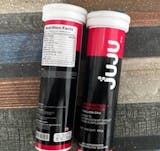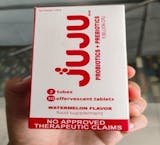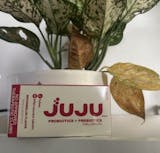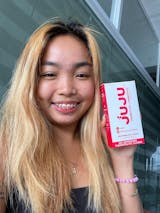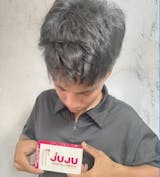Exfoliating is a very important step in skin care. It is well known that dead skin is the cause of most skin problems. We can’t just pull off dead skin with our hands, so we need a little help. Peeling lotions are something we can count on. It helps get rid of dead skin cells, opens up your pores, and makes your skin smooth and glowing. Peeling lotion is one way to get rid of those unwanted blemishes in the skin.
In this article, we’ll talk about what peeling lotion is, what it does, how to use it, and how it compares to other exfoliants.
IN THIS ARTICLE
11. Conclusion
What is Peeling Lotion?
Peeling Lotion is a pre-treatment care made of highly concentrated hydroxy acids (AHA and PHA) that exfoliate, remove dead skin cells, and strongly stimulate cellular regeneration for a resurfacing and clarifying effect. It has alpha-hydroxy acids (AHAs) or beta-hydroxy acids (BHAs), which help break up the bonds between dead skin cells and new ones. This helps get rid of dead skin cells, clear out clogged pores, and make your skin look brighter and smoother.
A chemical peel is a procedure in which a chemical solution is used to remove the top layers of skin. Peeling lotions are one type of chemical peel. When the skin comes back, it is smoother. If you get a light or medium peel, you might have to do the procedure more than once to get the results you want.
Chemical peels are usually used on the face to treat wrinkles, discoloured skin, and scars. They can be done on their own or in combination with other procedures. And you can do them from a light to a deep level. Deeper chemical peels have more noticeable effects, but they also take longer to heal from. This kind of peeling product comes in many forms like shower gels, eye cream, peeling oil , and hand and body cream that contains active ingredients that peels the skin.
How Does It Work?
Chemical peels work because they contain acids that make the skin more acidic, up to a pH level of about 3.8. When that chemical bond is broken, dead skin comes off, revealing healthy skin underneath. This process is called exfoliation. This process helps new, healthy skin cells to grow.
Peeling lotion works by getting rid of dead skin cells. It has acids like alpha hydroxy acids (AHAs) and beta hydroxy acids (BHAs) that help break up the bonds among dead skin cells and new ones. This helps get rid of dead skin cells, clear out clogged pores, and make your skin look brighter and smoother. It also helps to get the body to make more collagen, which makes wrinkles and fine lines look less noticeable.
PEELING LOTION BENEFITS
Here are some of the reasons why peeling lotion is helpful:
Exfoliation of Dead Skin Cells
Peeling lotion can help get rid of the dead skin cells that make your skin look dull and tired. By exfoliating, you can show off brighter, smoother, and healthier-looking skin.
Brightening of Skin Tone
Dead skin cells can make your skin look dull and dark, but peeling lotion can help get rid of them. By exfoliating your skin, you can show off skin that is brighter and has a more even color. Some whitening creams have peeling effects to whiten the skin.
Reduction of Fine Lines and Wrinkles
Peeling lotion makes your body make more collagen, which makes fine lines and wrinkles look less noticeable. Wrinkles are often a sign of getting older. Peeling lotions can be used by anyone, no matter how old they are.
Reduction of Hyperpigmentation
Peeling lotion helps get rid of dead skin cells, which can make your skin look darker. By exfoliating your skin, you can lessen the look of hyperpigmentation and make your skin tone look more even.
Reduction of Acne and Blemishes
Peeling lotion helps open up your pores, which can make acne and other skin problems look less noticeable.
The Common Myths About Peeling Lotion
Chemical Peels Are Very Painful
Peels that use chemicals are good for your skin. They gently remove dead skin cells and leave your skin feeling soft and clean. They don’t hurt at all, and there’s nothing about them that hurts.
If you’re still concerned about burning, you can get a glycolic peel. Despite the fact that it needs to get deep into your skin layers to do its job, this is the mildest peel you can get.
Chemical Peels Hurt Your Skin
Because of what the treatment is called, this is a common mistake. Chemical might not sound like a safe word to use on your skin, but all of the ingredients in this treatment are natural, and some of them come from plants. Lactic, Enzymatic, Glycolic, and Salicylic are just a few common ingredients.
You Can’t Get A Peel If You Have Sensitive Skin
Many people think that you can’t get a chemical peel if you have sensitive skin. This couldn’t be any less true. There are a few peels that are made to treat skin that is sensitive.
They are made with enzymes that reduce the redness and swelling that sensitive skin often has. Just tell the person doing the peel that you have delicate skin, and they’ll choose a chemical peel that works for you.
It Can Fix Any Skin Problem Right Away
Chemical peels can fix the damage you can see on your skin, but that doesn’t mean they can fix other skin problems that can’t be fixed. Moreover, any advancement does not happen overnight. Depending on your condition, you may need more than one appointment.
Besides that, it might help if you took care of your skin every day. No, it doesn’t matter how often you get a chemical peel. The issue could come back or even get worse if you don’t take care of your skin every day.
Peeling Always Gives You The Same Result
Every time you get a peel, you won’t get the same results. A few things that will affect how your experience goes. These are the period of year, your skin care routine, how often you get a peel, how well your skin handles it, and how healthy your skin is in general.
Depending on these things, the response could be very strong or very weak. Don’t think that the treatment didn’t work just because you didn’t see a big change right away.
Only People With Very Bad Skin Problems Should Use It
Chemical peels are commonly utilized by people with severe acne, but that’s not the only thing they’re good for. Chemical peels are additionally a great way to treat dark spots and freckles on the skin. They can also get rid of fine lines, wrinkles, and spots, and make the skin look and feel better overall.
Your Skin Will Peel Off Heavily
Acid is used in chemical peels to take off the top layer of skin. You might have peeling or you might not. Even if peeling happens, it won’t be that bad.
Even if you don’t peel, you haven’t wasted money. Still, the chemical peel worked. How much you peel depends on how healthy your skin is, how sensitive it is to the peel, and how strong the chemical peel is.
Chemical vs. Physical Exfoliation: Which Is Better
Any kind of exfoliation is known to have benefits. It can help make skin problems like clogged pores and even discoloration look better. Chemical exfoliating or using a scrub to get rid of dead skin cells and buildup helps other skincare treatments, like serums and moisturisers, work better. This makes your whole routine more effective. Regular exfoliation also makes your skin feel smoother and softer, which makes it naturally look more radiant. It’s the best way to make sure that your skin always looks healthy and fresh, which is something we all want.
Some of the benefits depend on what kind of exfoliation you choose. Both physical and chemical exfoliants have their uses; it’s not that one is better than the other. What it comes right down to is what kind of benefits you want.
Key Ingredients in Peeling Lotions
- AHAs
Alpha hydroxy acids, or AHAs, come from foods and are natural substances. For example, citrous fruits have citric acid and sour milk has lactic acid. They remove dead skin by separating the top layers of skin. AHAs can be used to treat acne, scars, hyperpigmentation, and skin with an uneven tone.
Most often, a chemical peel will have the following AHAs:
- Lactic acid
- Malic acid
- Mandelic acid
- Citric acid
- Glycolic acid
2. BHAs
Beta-hydroxy acids, or BHAs, are a type of mild acid that is often found in skin care products, especially those made to treat acne. Since more than 2,000 years ago, these acids that come from nature have been utilized to treat minor skin problems. While AHAs function to loosen the skin’s top layers, BHA works to get into the skin’s pores and break up the oil, dirt, and other things that are stuck there. Because of this, BHA is good at getting rid of acne, oily skin, and other skin problems.
3. PHAs
Polyhydroxy acid is a mild chemical that gets rid of dead skin. Gluconolactone, galactosen, and lactobionic acid are the most common PHAs. Dead skin cells are removed from the surface of the skin by PHAs. This makes the skin smoother and more even.
Dr. Weinstein says that PHAs can be thought of as a second generation of AHAs. “The size of the molecule is the main difference. When applied to the skin, PHAs don’t go as deep as AHAs because their molecules are bigger. Because of this, they are less irritating and better for skin that is sensitive.”
4. Enzymatic exfoliants
Enzyme exfoliation is a type of chemical chemical peels that gets rid of dead, dull skin cells by breaking down the “glue” that holds them together. Enzyme exfoliation gets rid of dead skin cells and speeds up the natural skin exfoliation process in a more gentle way than AHA chemical exfoliants.
Skin Types and Peeling Lotions
Oily Skin
Oily skin, large pores, frequent and severe breakouts, and marks that won’t go away after a breakout. So, a salicylic acid peel would be the best chemical peel for someone with this type of skin. Salicylic acid is oil-soluble, which means it can get through oil and into the lining of pores to clear out clogs and stop breakouts from happening.
Acne Prone Skin
People often have larger pores, blackheads, mild acne breakouts every now and then, and tight or irritated skin. We recommend a peel that has salicylic, lactic, and glycolic acids for this type of skin. Salicylic acid, which dissolves in oil, can get into clogged pores and cause breakouts. Lactic and glycolic acids, which dissolve in water, can dissolve and digest dead skin cells on the surface.
Combination
People have a mix of skin types or combination skin. It’s marked by large pores and too much oil in the T-zone, skin that gets red and flushed easily, and marks that last for weeks or months after a breakout. We recommend a peel with salicylic, lactic, and glycolic acids for this type of skin.
Again, the salicylic acid will get into the pore lining and help with clogged pores and breakouts, while the lactic and acid peels acids will work just on the surface to dissolve and digest dead skin cells. Of course, your skin professional will have to decide the exact amounts of each acid in the peel.
Sensitive
People have a lot of redness and sensitivity, so harsh chemical peels are not a good idea. Instead, go for a lactic acid peel. Lactic acid is easy on the skin and doesn’t irritate it as much as other acids do.
Well -Known Peeling Lotion In The Market
There are many well known peeling products in the market today. Most of this products promises to help in body’s skin whitening and best in deep cleansing , facial exfoliator and will give you smooth and glowing skin.
- Dr. Alvin – This Dr Alvin product is one of first peeling products to be in the market. They offer a rejuvenating set that comes with a whitening soaps, toner and night and day cream lotion. The effects of these products gained good reviews that up until now, dr alvin products are still in the market.
- Brilliant Skin Essentials – If you are in tiktok most of the time, this product is very popular. Aside from its popular posts and popular endorsers, Brilliant Skin offers cream lotion, body cream, body whitening lotion and other products.
- Orange Peeling Lotion – This orange peeling product has been around in the market that claims peeling skin effect and claims to reduce dark spots, stretch mark and shallow scar.
How to Use Peeling Lotion
Here are some tips on how to use peeling lotion:
- Precautions before use: It’s important to do a patch test before using peeling lotion to make sure you’re not allergic to any of the ingredients. You must check the effect of the product as absorbed by the skin. If the product makes your skin irritated or red, stop using it right away.
- Application method: Before putting the product on your skin, make sure you know how to use it. Apply a small amount of peeling lotion to your neck and face, making sure to stay away from your eyes. Gently rub it into your skin, and then wash it off with cool water. Keep your face dry and don’t wash it or take a shower for the first 24 hours. Also, don’t put on makeup until your skin is fully healed.
- Recommended frequency of use: Peeling lotion should be used once or twice a week, according to your skin type and the instructions on the bottle. Don’t scrub too much. Don’t put it on again if you don’t see results right away. It takes a long time to peel. If you scrub your skin too much, it can get even worse.
Tips for effective use: Follow the directions on how to use the product, and also don’t leave the peeling lotion on for longer than the directions . Also, don’t use physical scrubs or other exfoliants on the exact day that you use peeling lotion. If irritation occurs , you need to stop . Skin is more affected by sunlight for a short time, so use sunscreen every day. It should say on the label that it protects against both UVA and UVB rays from the sun. It should also be a physical sunscreen with an SPF of 30 or more. Limit the time you spend in the sun, especially between 10 a.m. and 2 p.m., and wear a hat with a wide brim.
Frequently Asked Questions
How often should I use a peeling lotion?
The frequency of using a peeling lotion largely depends on the product and your skin type. In general, it’s recommended to use peeling lotions once or twice a week to avoid over-exfoliation and irritation. However, if you have sensitive skin, you may want to use the product less frequently or opt for a gentler formula.
How do peeling lotions compare to physical exfoliants?
Peeling lotions work by using chemical exfoliants such as alpha-hydroxy acids (AHAs) or beta-hydroxy acids (BHAs) to dissolve dead skin cells on the surface of the skin. Physical exfoliants, on the other hand, use scrubbing particles to physically remove dead skin cells. While both methods can be effective, peeling lotions are generally considered to be less harsh on the skin and can be a better option for those with sensitive skin.
Are there any side effects or risks associated with using peeling lotions?
Like any skincare product, there is a risk of side effects with peeling lotions. Common side effects include redness, irritation, dryness, and peeling. It’s important to patch test the product before use and follow the instructions carefully to minimize the risk of these side effects.
What should I do if my skin reacts negatively to a peeling lotion?
If you experience any negative reactions to a peeling lotion, stop using the product immediately and rinse your skin with cool water. You may also want to apply a soothing, fragrance-free moisturizer to calm any irritation. If the symptoms persist or worsen, it’s best to consult a dermatologist.
What is the difference between a peeling lotion and a chemical peel?
A peeling lotion is a milder version of a chemical peel that you can use at home. Chemical peels, on the other hand, are more potent and are usually done in a dermatologist’s office. Chemical peels use higher concentrations of chemical exfoliants and are designed to penetrate deeper into the skin to treat specific skin concerns.
How should I store my peeling lotion to maintain its effectiveness?
To maintain the effectiveness of your peeling lotion, it’s important to store it in a cool, dry place away from direct sunlight. Additionally, make sure to keep the product tightly sealed to prevent air and moisture from getting in. Finally, always check the expiration date and discard the product if it has expired.
Conclusion
No matter what kind of skin you have, peeling lotions can be a good addition to your skincare routine. By getting rid of the dead skin cells, it helps reveal skin that is smoother, brighter, and healthier. But it’s important to know what kind of skin you have and choose the right peeling lotion for your needs. Talk to a dermatologist or other expert on skin care to get a personalized suggestion. Remember that using peeling lotions regularly and taking care of your skin in other ways, like drinking enough water and staying out of the sun, can help you look younger and more beautiful.



